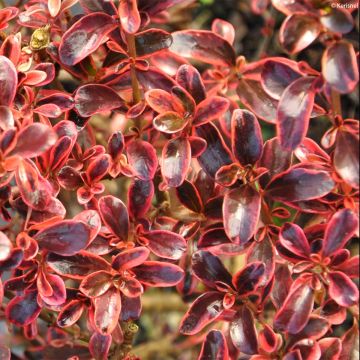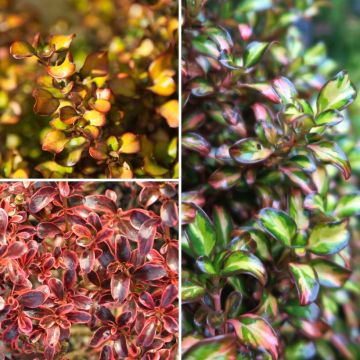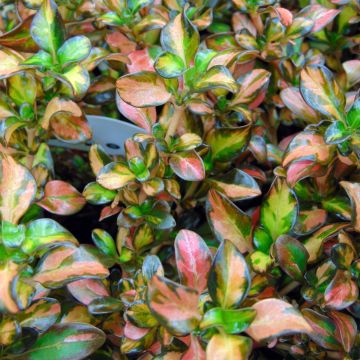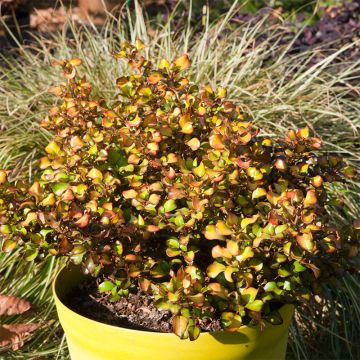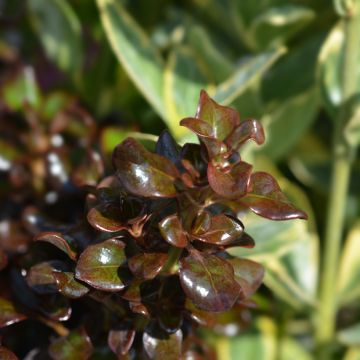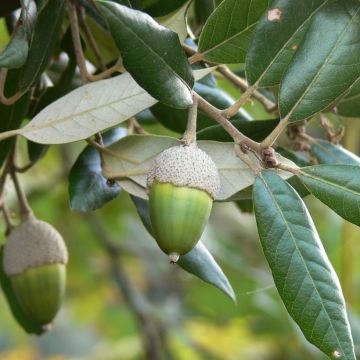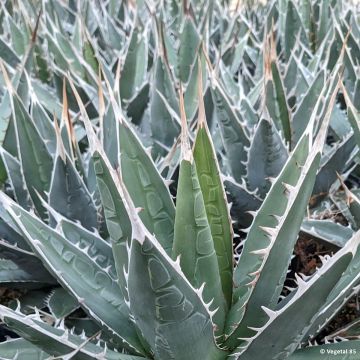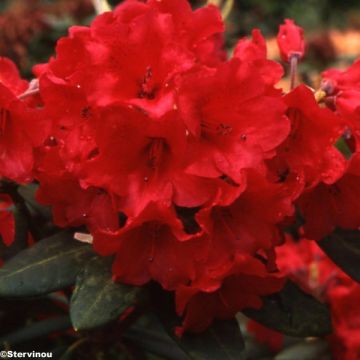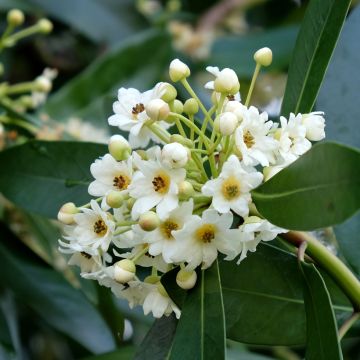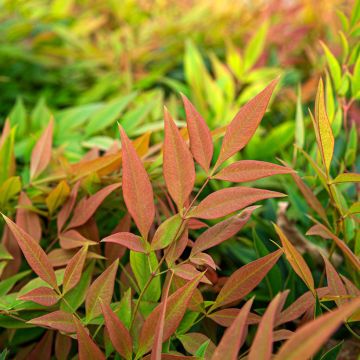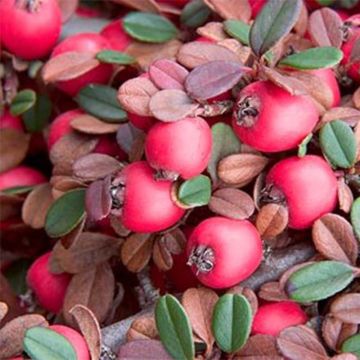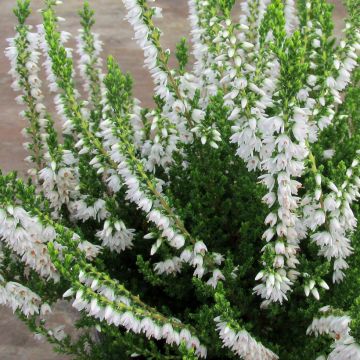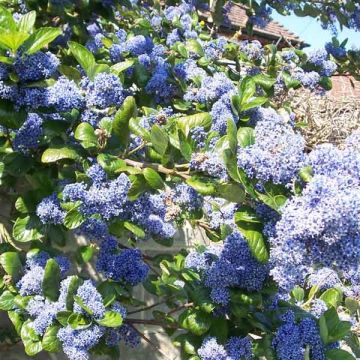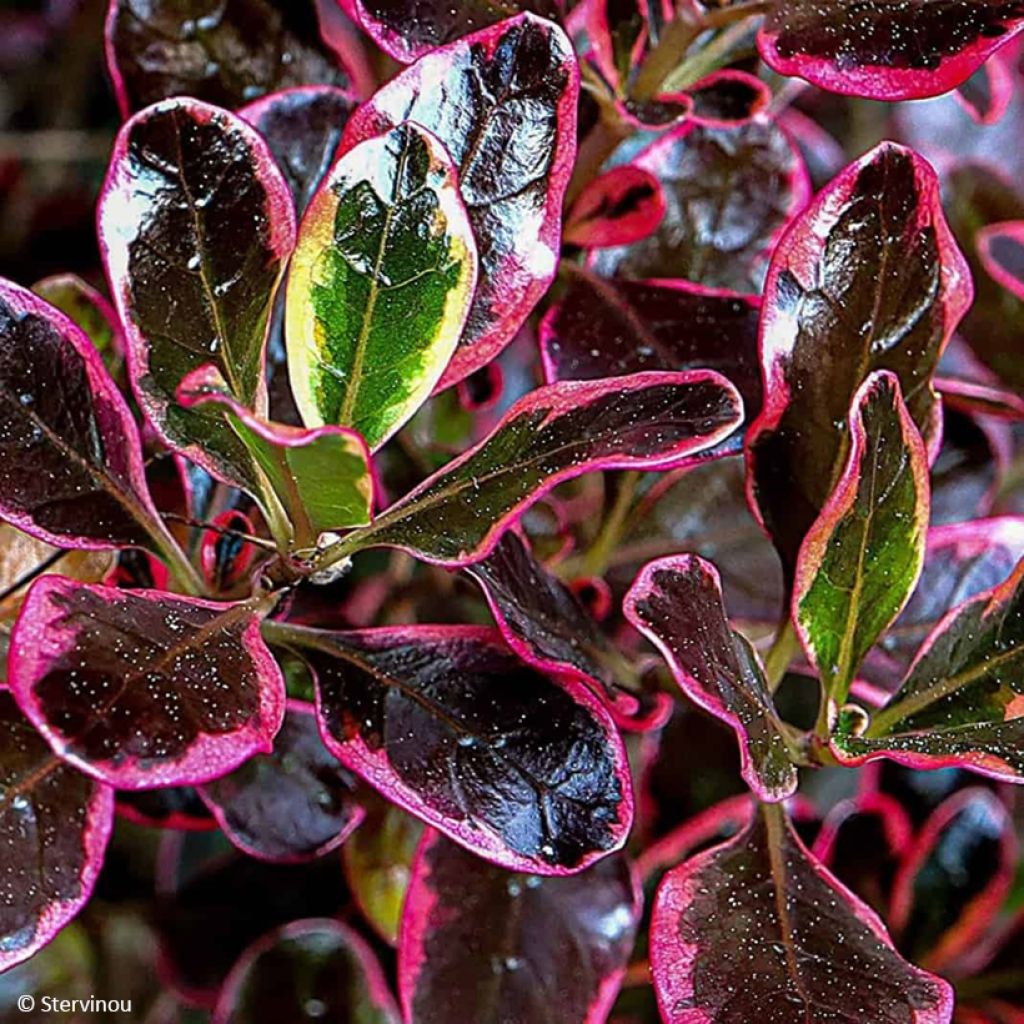

Coprosma x repens ECLIPSE
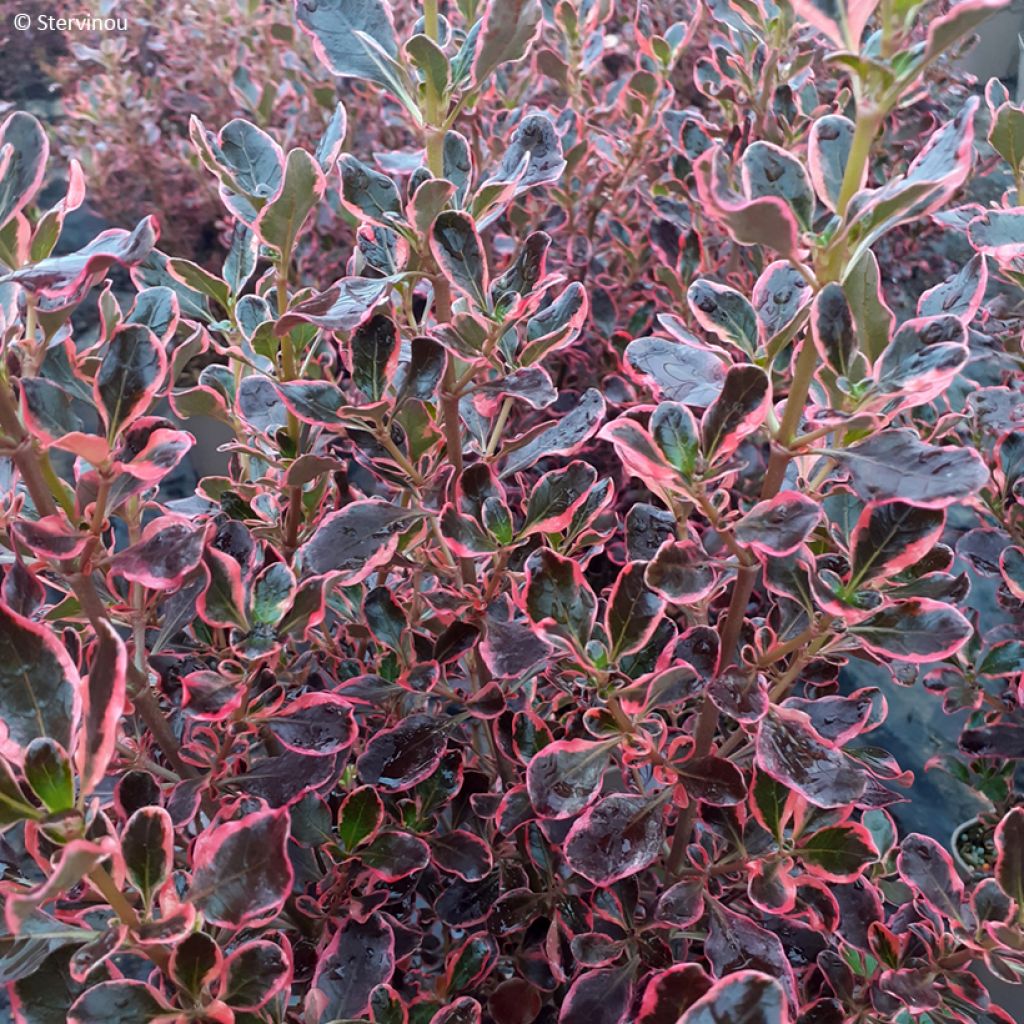

Coprosma x repens ECLIPSE
Coprosma x repens ECLIPSE
Coprosma x repens 'Aldawn' ECLIPSE
Mirror Bush, Looking Glass Plant, New Zealand Laurel
This item cannot be shipped to the selected country
Delivery charge from €5.90
More information
Schedule delivery date,
and select date in basket
This plant carries a 24 months recovery warranty
More information
We guarantee the quality of our plants for a full growing cycle, and will replace at our expense any plant that fails to recover under normal climatic and planting conditions.
From €5.90 for pickup delivery and €6.90 for home delivery
Express home delivery from €8.90.
Does this plant fit my garden?
Set up your Plantfit profile →
Description
The Coprosma repens 'Eclipse' is a very attractive small bush, with evergreen foliage predominantly purple, ornamental throughout the seasons. It is marginally hardy outside of the south and coastal areas with mild winters, where it shows tolerance to sea spray. Elsewhere, it can easily be grown in a pot to be brought indoors in winter, as it remains compact. Its very glossy small leaves catch everyone's eye in the garden with their dark purple colour, highlighted by a pink margin of great effect. An ideal plant to create foliage contrasts in a mild climate flower bed, or to embellish a balcony further north.
The Coprosma belongs to the Rubiaceae family, rich in about 10,000 species, mainly in the tropics, with perhaps the most well-known member being the Coffee plant (Coffea), and also including ornamental plants such as the Gardenia with its intoxicating scent. Most of the approximately 90 species that make up the Coprosma genus are native to New Zealand. This is the case for Coprosma repens (formerly Coprosma baueri) introduced to Europe around 1866. Contrary to what the species name might suggest, the plant is not creeping, but in its country of origin forms a large bush, even a small tree reaching 3 to 6 m in height, with strong branches covered in reddish-brown bark. It bears opposite, oval, elongated leaves, measuring 3 to 7 cm in length, shiny dark green in colour. This shine earns it the English name "mirror plant" and gives it its ornamental character, as the flowering is relatively insignificant. The small yellowish flowers, measuring 6 mm in length, produce orange-red drupes as fruits.
The ornamental cultivars found on the market are much more compact. This is the case for Coprosma 'Aldawn' ECLIPSE which forms a dense clump of 0.50 m to 1 m in all directions, rarely reaching 1.50 m in height. Its initially erect habit widens over time to take on an irregular, spreading cup shape, with a somewhat natural appearance, however contradicted by its colour and the glossiness of its leaves, ultimately giving it an exotic look. Its oval leaves with rounded tips are slightly undulate and oppositely arranged in pairs. Their texture is slightly leathery and their smooth surface like an ice rink surprises and fascinates with its glossiness. The fairly dark purple colour of the lamina is enhanced by a fine irregularly wide margin of pinkish hue of varying intensity. In summer, the sun further intensifies these colours and the plant catches all eyes. It produces a nearly insignificant white flowering, between June and August, which cannot compete with the attractiveness of the foliage.
The Coprosma Eclipse will find its perfect spot in gardens along the Breton coast or the southern Atlantic coast, as well as in non-calcareous areas in the south. Plant it alongside other decorative foliage plants to create an ornamental flower bed all year round. The Pittosporum tenuifolium 'Golden Ball' forming a compact yellow and green ball then acid green will contrast beautifully at its side, as will the cultivar 'Irene Patterson' with white speckled leaves. In the background, the Eucalyptus 'Baby Blue' will provide a beautifully blueish backdrop with its very graphic round leaves. And to bloom your scene, opt for the Anigozanthos, or Kangaroo Paw, so named for its astonishing fluffy flowers that flourish abundantly in summer.
Report an error about the product description
Plant habit
Flowering
Foliage
Botanical data
Coprosma
x repens
'Aldawn' ECLIPSE
Rubiaceae
Mirror Bush, Looking Glass Plant, New Zealand Laurel
Cultivar or hybrid
Other Coprosma
Planting and care
The Coprosma repens 'Eclipse' thrives in open ground in our coastal regions with little frost. It is preferably planted in spring, in full sun or partial shade in the south, with autumn colours being more intense in the sun. It is a plant that tolerates drought and poor soils well (although it appreciates moderately fertile soils), but dislikes the presence of active limestone in the soil. Plant it in a light soil, for example a mix of leaf compost, heather soil, and river sand, well-drained. When planting, the planting hole should be twice the size of the root ball. Water regularly to aid establishment. Once well established, the Coprosma can do without watering in summer. It thrives in coastal areas, even tolerating salt spray.
Pruning is not essential. It should be done if necessary between April and August, sparingly. Water regularly the plants grown in containers. In cold regions, bring them indoors to a cool, bright, minimally heated room before the arrival of heavy frosts.
Modern hybrids seem to be less prone to attacks from scale insects and sooty mould. However, plants grown in greenhouses will be more exposed to these pests and diseases.
Planting period
Intended location
Care
This item has not been reviewed yet - be the first to leave a review about it.
Evergreen shrubs
Haven't found what you were looking for?
Hardiness is the lowest winter temperature a plant can endure without suffering serious damage or even dying. However, hardiness is affected by location (a sheltered area, such as a patio), protection (winter cover) and soil type (hardiness is improved by well-drained soil).

Photo Sharing Terms & Conditions
In order to encourage gardeners to interact and share their experiences, Promesse de fleurs offers various media enabling content to be uploaded onto its Site - in particular via the ‘Photo sharing’ module.
The User agrees to refrain from:
- Posting any content that is illegal, prejudicial, insulting, racist, inciteful to hatred, revisionist, contrary to public decency, that infringes on privacy or on the privacy rights of third parties, in particular the publicity rights of persons and goods, intellectual property rights, or the right to privacy.
- Submitting content on behalf of a third party;
- Impersonate the identity of a third party and/or publish any personal information about a third party;
In general, the User undertakes to refrain from any unethical behaviour.
All Content (in particular text, comments, files, images, photos, videos, creative works, etc.), which may be subject to property or intellectual property rights, image or other private rights, shall remain the property of the User, subject to the limited rights granted by the terms of the licence granted by Promesse de fleurs as stated below. Users are at liberty to publish or not to publish such Content on the Site, notably via the ‘Photo Sharing’ facility, and accept that this Content shall be made public and freely accessible, notably on the Internet.
Users further acknowledge, undertake to have ,and guarantee that they hold all necessary rights and permissions to publish such material on the Site, in particular with regard to the legislation in force pertaining to any privacy, property, intellectual property, image, or contractual rights, or rights of any other nature. By publishing such Content on the Site, Users acknowledge accepting full liability as publishers of the Content within the meaning of the law, and grant Promesse de fleurs, free of charge, an inclusive, worldwide licence for the said Content for the entire duration of its publication, including all reproduction, representation, up/downloading, displaying, performing, transmission, and storage rights.
Users also grant permission for their name to be linked to the Content and accept that this link may not always be made available.
By engaging in posting material, Users consent to their Content becoming automatically accessible on the Internet, in particular on other sites and/or blogs and/or web pages of the Promesse de fleurs site, including in particular social pages and the Promesse de fleurs catalogue.
Users may secure the removal of entrusted content free of charge by issuing a simple request via our contact form.
The flowering period indicated on our website applies to countries and regions located in USDA zone 8 (France, the United Kingdom, Ireland, the Netherlands, etc.)
It will vary according to where you live:
- In zones 9 to 10 (Italy, Spain, Greece, etc.), flowering will occur about 2 to 4 weeks earlier.
- In zones 6 to 7 (Germany, Poland, Slovenia, and lower mountainous regions), flowering will be delayed by 2 to 3 weeks.
- In zone 5 (Central Europe, Scandinavia), blooming will be delayed by 3 to 5 weeks.
In temperate climates, pruning of spring-flowering shrubs (forsythia, spireas, etc.) should be done just after flowering.
Pruning of summer-flowering shrubs (Indian Lilac, Perovskia, etc.) can be done in winter or spring.
In cold regions as well as with frost-sensitive plants, avoid pruning too early when severe frosts may still occur.
The planting period indicated on our website applies to countries and regions located in USDA zone 8 (France, United Kingdom, Ireland, Netherlands).
It will vary according to where you live:
- In Mediterranean zones (Marseille, Madrid, Milan, etc.), autumn and winter are the best planting periods.
- In continental zones (Strasbourg, Munich, Vienna, etc.), delay planting by 2 to 3 weeks in spring and bring it forward by 2 to 4 weeks in autumn.
- In mountainous regions (the Alps, Pyrenees, Carpathians, etc.), it is best to plant in late spring (May-June) or late summer (August-September).
The harvesting period indicated on our website applies to countries and regions in USDA zone 8 (France, England, Ireland, the Netherlands).
In colder areas (Scandinavia, Poland, Austria...) fruit and vegetable harvests are likely to be delayed by 3-4 weeks.
In warmer areas (Italy, Spain, Greece, etc.), harvesting will probably take place earlier, depending on weather conditions.
The sowing periods indicated on our website apply to countries and regions within USDA Zone 8 (France, UK, Ireland, Netherlands).
In colder areas (Scandinavia, Poland, Austria...), delay any outdoor sowing by 3-4 weeks, or sow under glass.
In warmer climes (Italy, Spain, Greece, etc.), bring outdoor sowing forward by a few weeks.

































